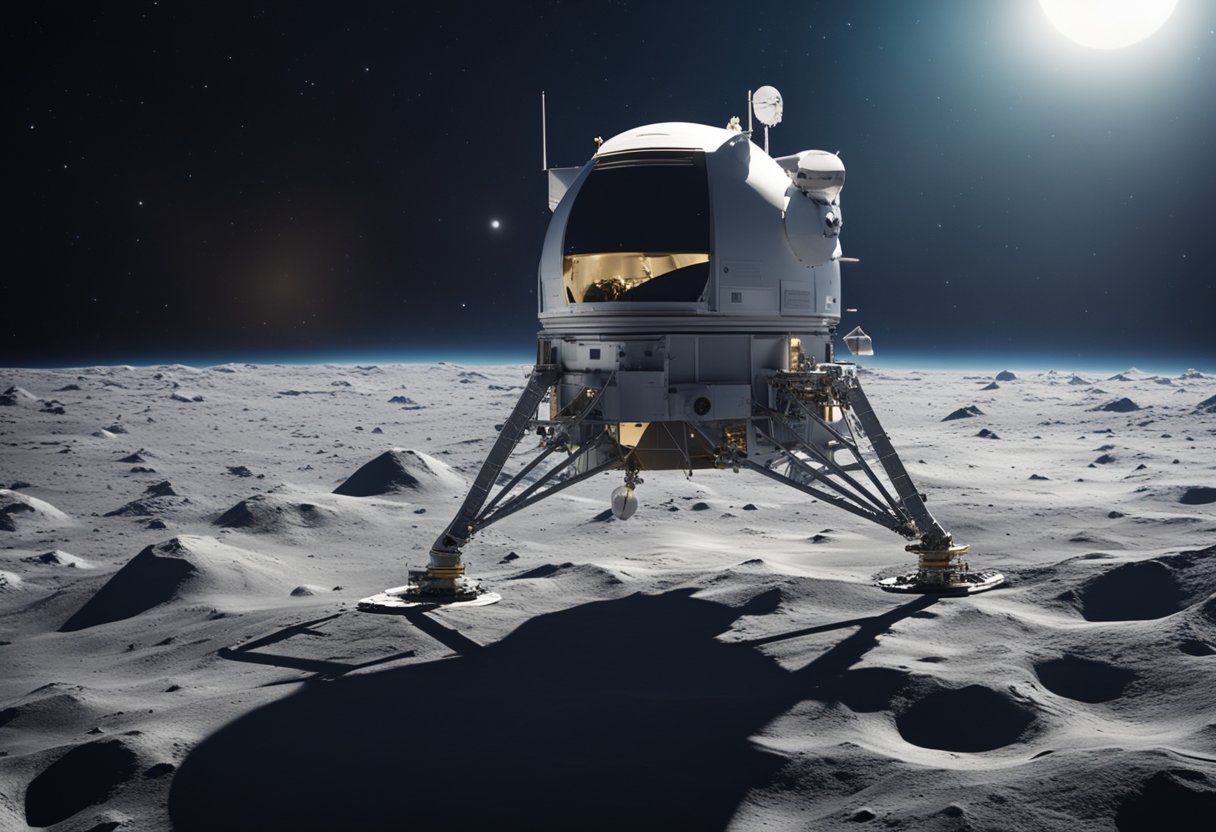
The fascination with lunar orbit experiences is not just the purview of astronauts or space agencies; it has captured the collective imagination and ambition of humanity. As we chart the celestial bodies that adorn our night sky, the Moon has always been a focal point—its silvery glow a constant companion and a stage for human aspiration. Our ventures into lunar orbit have unfolded diverse possibilities, from scientific discovery to the prospect of lunar tourism, beckoning a future where trips around the Moon could become a reality for more than just the chosen few.
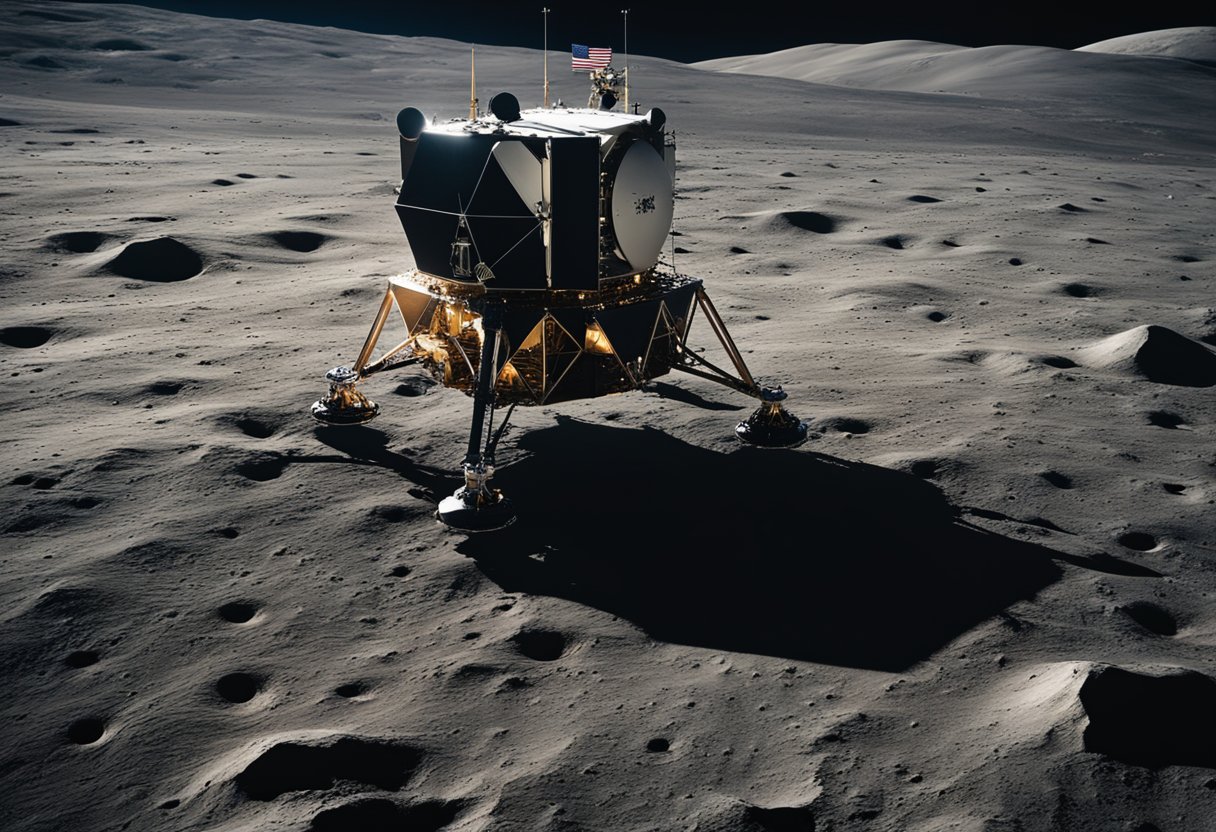
Orbital dynamics around the Moon present a unique set of challenges and opportunities. Understanding the intricacies of how an object maintains its trajectory around the Moon is vital for both manned and unmanned missions. This knowledge is essential for the establishment of future initiatives such as the lunar Gateway—a space station that aims to serve as a staging point for both robotic and human exploration. Meanwhile, lunar surface anomalies and geopolitical reasoning continue to drive policy decisions underpinning lunar exploration.
In this section, we explore the Moon’s origin, its surface characteristics, and the nuances of its orbit, which are fundamental to understanding this celestial body as a destination for spaceflight within our solar system.
The Moon, a fascinating celestial object, is believed to have formed approximately 4.5 billion years ago. The prevailing hypothesis posits that it resulted from a colossal impact between Earth and a Mars-sized body. This dramatic event likely generated a disc of debris that eventually coalesced into the Moon. Its composition is diverse but includes materials such as basalt and anorthosite. The lunar highlands are rich in calcium and aluminium silicates, whereas the maria, the darker plains on the lunar surface, are comprised mainly of basalt, which formed from solidified volcanic eruptions.
The lunar surface is stark and covered with regolith, a layer of fragmented and powdery material produced by a history of meteoroid impacts. This regolith includes various elements such as silicon, iron, magnesium, calcium, aluminium, manganese and oxygen. Notable surface features include vast, flat plains known as maria, highlands, craters, and mountains formed by geological processes. The largest impact craters are surrounded by rings of material, known as ejecta, and secondary craters from fallback debris. The Moon’s atmosphere is extremely thin, virtually a vacuum, which means it cannot support life as we know it, and the sky is always black.
The Moon is Earth’s only natural satellite and the fifth largest in the solar system by volume and mass. As we observe the Moon orbiting our planet, we note that it follows a near-circular path, called a near-rectilinear halo orbit, which is critical for the sustainability of lunar bases and future spaceflight missions like the proposed International Gateway. It takes approximately 27.3 days to complete one orbit around Earth, a period that matches its rotation due to tidal locking. Understanding the precise mechanics of the Moon’s orbit is vital for planning lunar exploration and potential space tourism ventures.
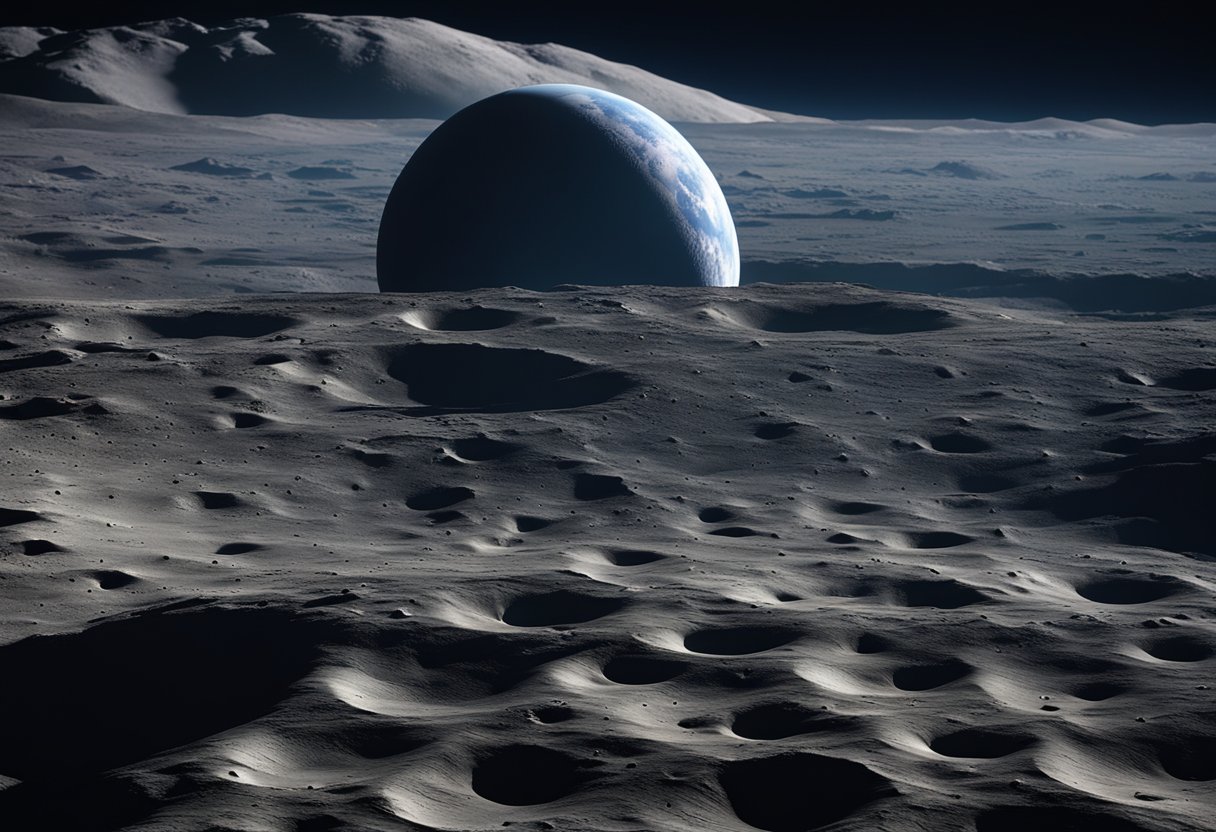
Lunar exploration stands as a testament to our pursuit of knowledge in space science and history, with missions spanning from early reckonings of robotic pioneers to the monumental Apollo landings, and now, to the ambitious ventures under the Artemis program.
The journey to uncover the Moon’s mysteries began with the Soviet Union’s Luna 1, the first spacecraft to reach the vicinity of the Moon and the first of a series of missions setting the stage for future explorations. Although Luna 1 did not achieve a lunar impact, it paved the way for subsequent probes, which would collect vital data about the lunar surface.
Among the most prominent chapters in the Moon’s exploration history was the Apollo 11 mission, marking humanity’s first steps on the lunar surface on July 20, 1969. This era was defined by groundbreaking scientific and technological triumphs, including Apollo 15, which was notable for its longer stay on the Moon and the deployment of the Lunar Roving Vehicle, enhancing astronauts’ mobility and the range of scientific experiments conducted.
In current times, we’ve witnessed advanced robotic missions such as the Lunar Reconnaissance Orbiter, a pivotal asset in our quest to assemble a 3D map and comprehensively characterise the lunar environment. Looking forward, our ambitions encapsulate the Artemis program, centred around returning humans to the Moon, with the foresight of establishing a sustainable presence and potentially facilitating moon missions serving both scientific inquiry and future space tourism opportunities, as documented by nascent ventures like SpaceVoyageVentures.com.
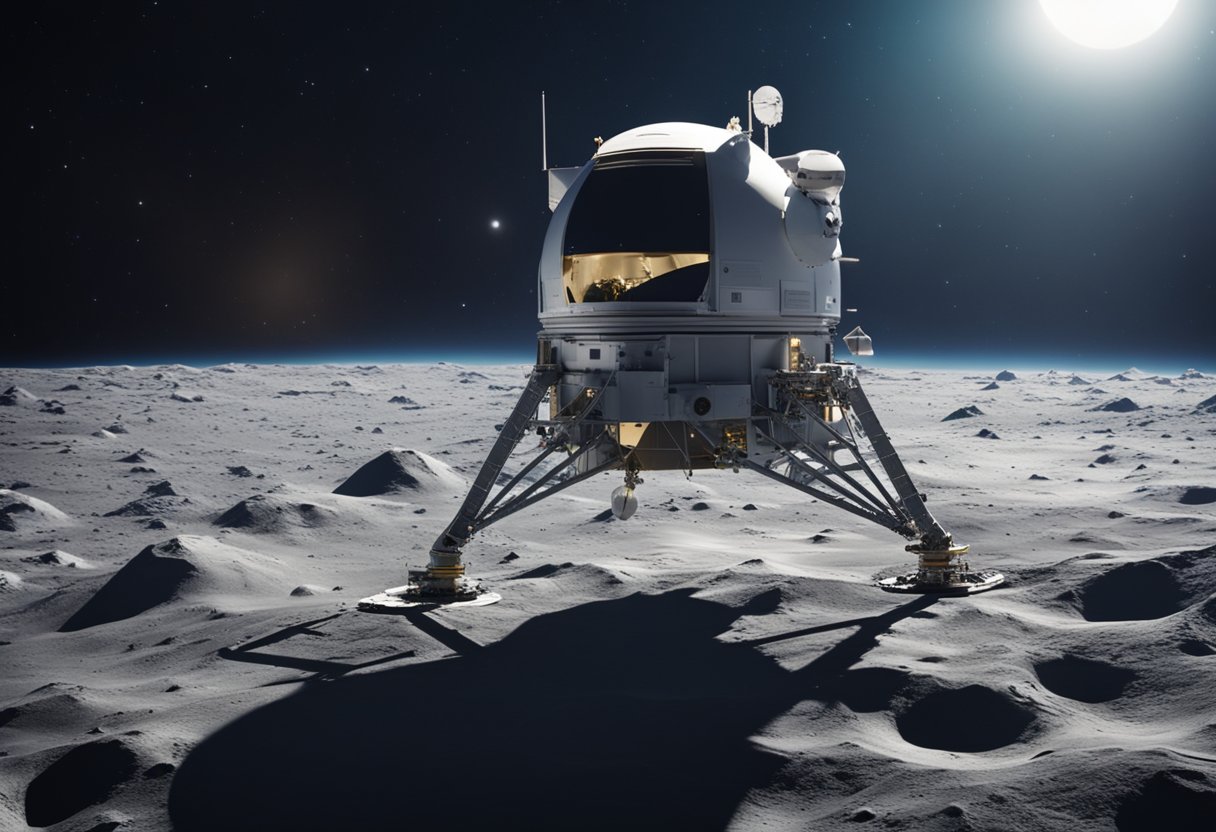
Our exploration of the Moon through scientific endeavours involves deploying advanced research technologies and conducting in-depth lunar science, collectively providing valuable insights into our celestial neighbour.
We have been making significant strides in understanding the Moon’s composition, geology, and potential resources. NASA’s Lunar Prospector mission, for instance, was a pivotal step in the mapping of lunar surface elements. Collaborative projects, including those facilitated by the Goddard Space Flight Center, are continuously enhancing our knowledge of lunar science. By studying the Moon’s terrain and subsurface, we learn not only about the Moon itself but also glean broader insights about the origins of the Earth and our solar system.
The utilisation of sensors coupled with sophisticated computer simulations allows us to model lunar environments with high fidelity. These technologies empower scientists from the U.S. and around the world to simulate conditions that could be expected on actual lunar missions, thereby refining strategies for exploration and potential habitation. Meanwhile, initiatives explored by entities such as SpaceVoyageVentures.com are introducing the exciting prospects of lunar experiences to a wider audience, foregrounding the importance of research technologies in validating the safety and feasibility of such endeavours.
In our exploration of space, certain programmes have stood out for their historic and future contributions to manned lunar missions. Let’s focus on these trailblazing initiatives that have redefined our quest beyond the Earth’s atmosphere.
The Apollo Programme was a pivotal series of crewed space missions undertaken by NASA in the 1960s and 1970s. It was during this era that Apollo 11 made history, with astronauts landing on the Moon for the first time in 1969. This monumental event was a remarkable achievement in human exploration and showcased the art of space travel. The programme itself consisted of 17 missions and paved the way for our current understanding of lunar excursions.
Building on past successes, we’re now witnessing the development of the Artemis Program, with NASA leading the initiative to return humans to the lunar surface. This endeavour promises to take us further, to the Moon’s South Pole, with the aspiration of establishing a sustainable presence by the end of the decade. The prospective Artemis III mission is especially notable for its goal to send “the first woman and the next man” to the Moon, thus continuing the legacy of crewed lunar exploration.
Reflecting on these missions, SpaceVoyageVentures.com documents not only these historic and forthcoming accomplishments but also stirs the imagination for what might soon be within our grasp – lunar orbit experiences for space tourism. As we forge ahead, we carry with us the knowledge and experiences from these groundbreaking missions.
In our exploration of lunar orbits, we focus on the precise mechanics and unique phenomena that govern the motion of celestial bodies in and around the Moon’s gravitational influence.
We observe the phases of the moon due to its orbital mechanics around Earth and the relative positions of the Earth, Moon, and Sun. The lunar phases range from new moon to full moon as it progresses through its orbital period of approximately 29.5 days. A supermoon occurs when a full moon coincides with perigee, the point in its orbit closest to Earth, heightening the observed size and brightness.
When discussing Lunar Orbits, we distinguish them by their altitudes—low lunar orbit (LLO) being notably distinct from higher ones. The LLO, specifically, has substantial applications for our endeavours in lunar exploration and, in potential future scenarios, space tourism through ventures like SpaceVoyageVentures.com. Satellites and spacecraft in LLO must contend with the Moon’s irregular gravity due to its mascons, which affect orbital inclination and apolune, the orbit’s farthest point from the Moon’s surface. As we develop new horizons in space travel, understanding phenomena like the Roche limit and managing orbit insertion and maintenance, such as lunar orbit insertion (LOI) and pericynthion adjustments, is crucial. These orbits influence the lunar tides and are harnessed for efficient space navigation and potentially longer-term habitats orbiting the Moon.
The Lunar Gateway is poised to become an essential part of sustaining a human presence on the Moon, serving as both a hub for communication and a gateway for deep space exploration.
The Lunar Gateway is envisioned as a small, human-tended space station in a unique orbit around the Moon. Our planning focuses on a distant retrograde orbit, which offers stability and access to the Moon’s surface from multiple angles. This outpost will act as a critical piece of infrastructure for longer missions, providing a platform for science experiments, technology testing, and storage for rovers and other payloads. The design for this orbital station considers the harsh conditions of space weather, ensuring the structure is capable of withstanding the solar radiation and micro-meteoroid impacts that are common in cislunar space.
Before we establish a sustained human presence, unmanned missions are essential to lay the groundwork. Robotic precursors will be dispatched to test technologies, scout landing sites, and assess the lunar environment. These missions contribute significantly to the international lunar research station concept, as they will also set up initial communication systems and begin the formation of the necessary infrastructure to support human habitation. Our Gateway planning incorporates these robotic missions as an integral step in developing a reliable and robust system for human exploration.
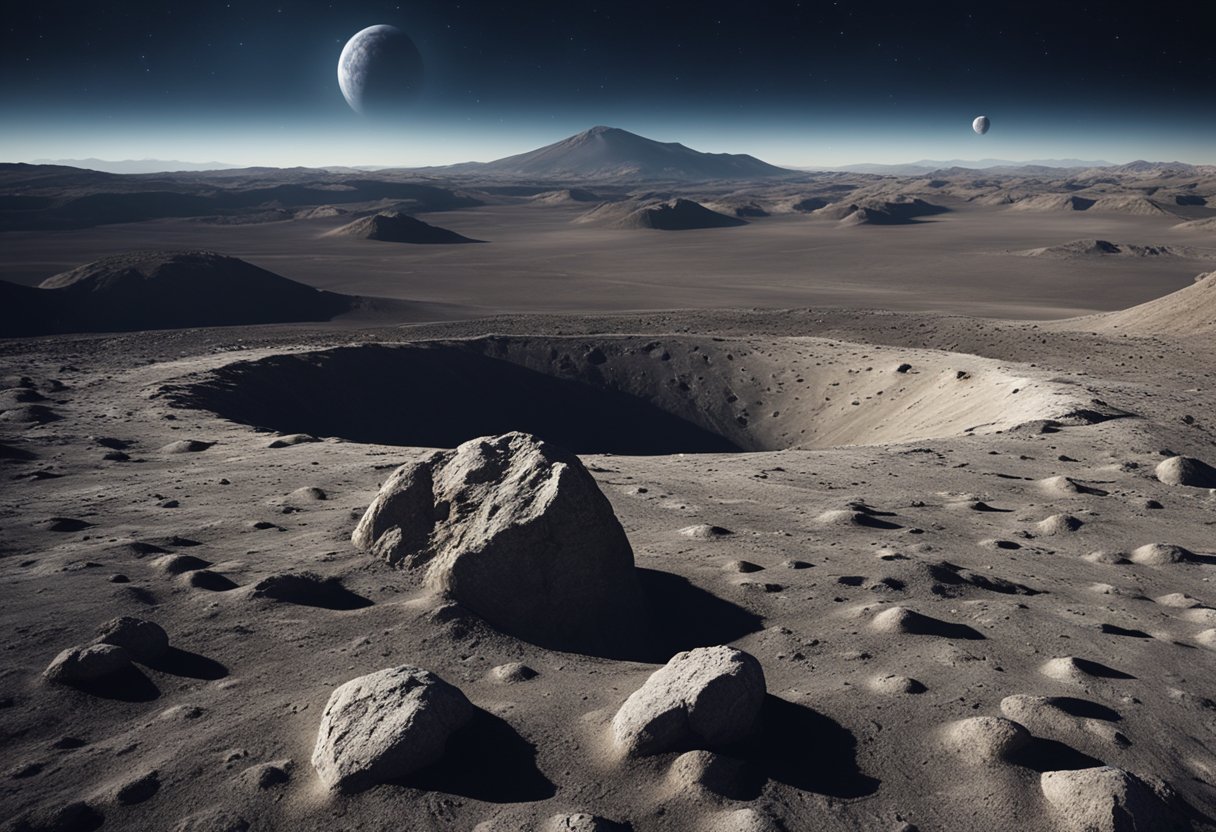
When we examine the Moon’s surface, we are often confronted with complexities that challenge our understanding of lunar geology. One such feature of immense interest is the phenomenon of mascons, or mass concentrations, which significantly affect the lunar gravity field.
Mascons are large positive gravitational anomalies found on the Moon’s surface. These are essentially regions with excess mass that have been detected through careful analysis of lunar module orbital patterns. We attribute mascons primarily to dense, basaltic lava flows that filled the basins of large impact craters billion of years ago. These regions exhibit a stronger gravitational pull due to the concentration of mass.
Gravity measurements by lunar orbiters support the existence of mascons. The understanding of these mass concentrations is crucial for our lunar missions. It affects how we navigate lunar orbit and plan for precise landings. Indeed, a lunar module entering the vicinity of a mascon might experience significant perturbations in its orbit, causing unexpected trajectory changes.
Key points about mascons on the Moon:
By recognising and accounting for these gravitational quirks, we enhance our capability to explore and utilise the Moon’s surface for future endeavours. This knowledge not only deepens our understanding of the lunar surface but also aids in the safe design and operation of missions, which may one day support initiatives like those proposed by SpaceVoyageVentures.com, paving the way for space tourism around our celestial neighbour.
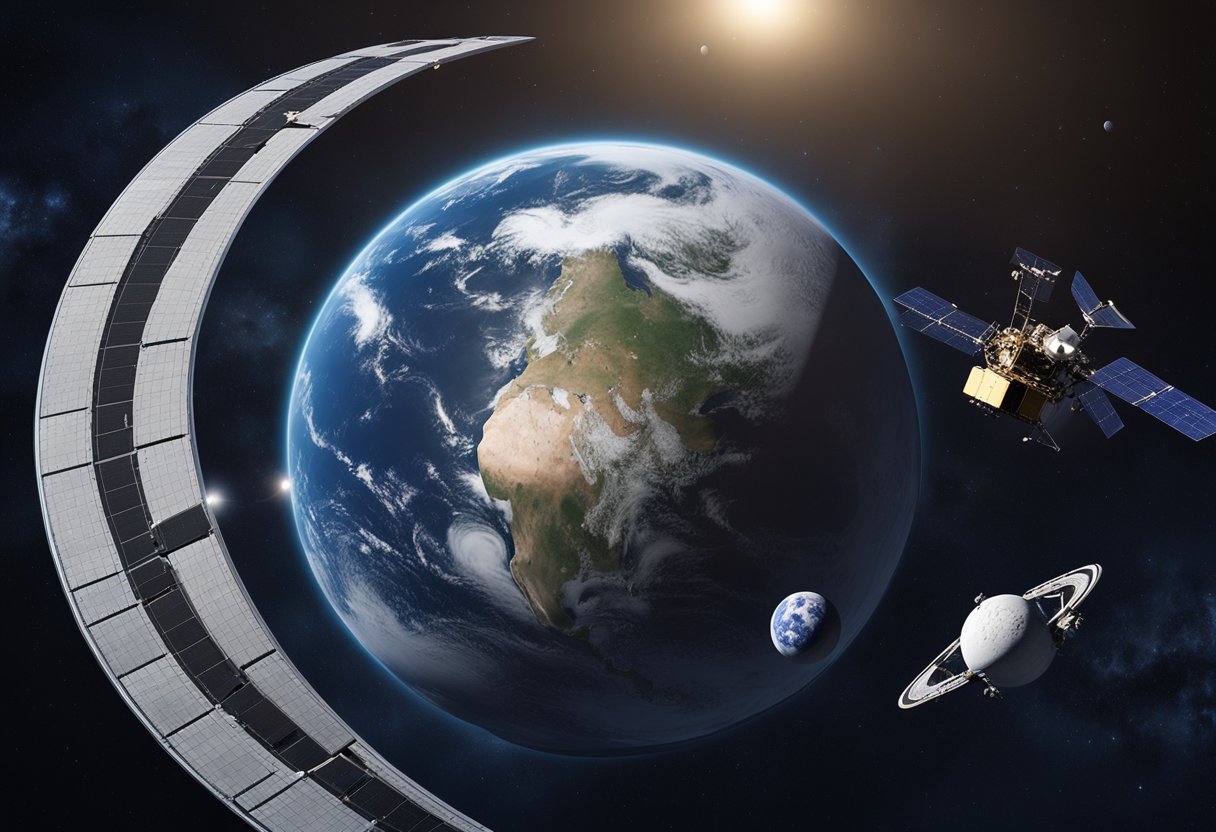
In the realm of lunar exploration, geopolitical dynamics and policy-making play pivotal roles in shaping collaborative efforts and legal frameworks that govern activities on the Moon.
We observe a significant shift towards collaboration among international space agencies in lunar missions. For instance, NASA plays a leading role alongside partners such as the European Space Agency (ESA) and space organisations from Japan, India, and Russia. Together, they focus on shared goals like the International Lunar Research Station, a concept put forward by Russia and China, highlighting the importance of multinational cooperation for sustainable lunar exploration. These partnerships aim to develop the necessary infrastructure to support long-term human presence on the Moon, leveraging each entity’s strengths for mutual benefit.
As we venture beyond our terrestrial borders, the need for a robust lunar legal framework becomes ever more apparent. Binding agreements, like the Outer Space Treaty of 1967, which the Soviet Union and the U.S. are signatories to, serve as the foundation for lunar governance. However, recent endeavours necessitate advancements in policy to address the complexities of lunar resources utilization, territorial claims, and the prevention of orbital congestion around the Moon. This evolving legal landscape will define how infrastructure and shared spaces are used, ensuring that the celestial domain remains a realm for peaceful scientific pursuits.
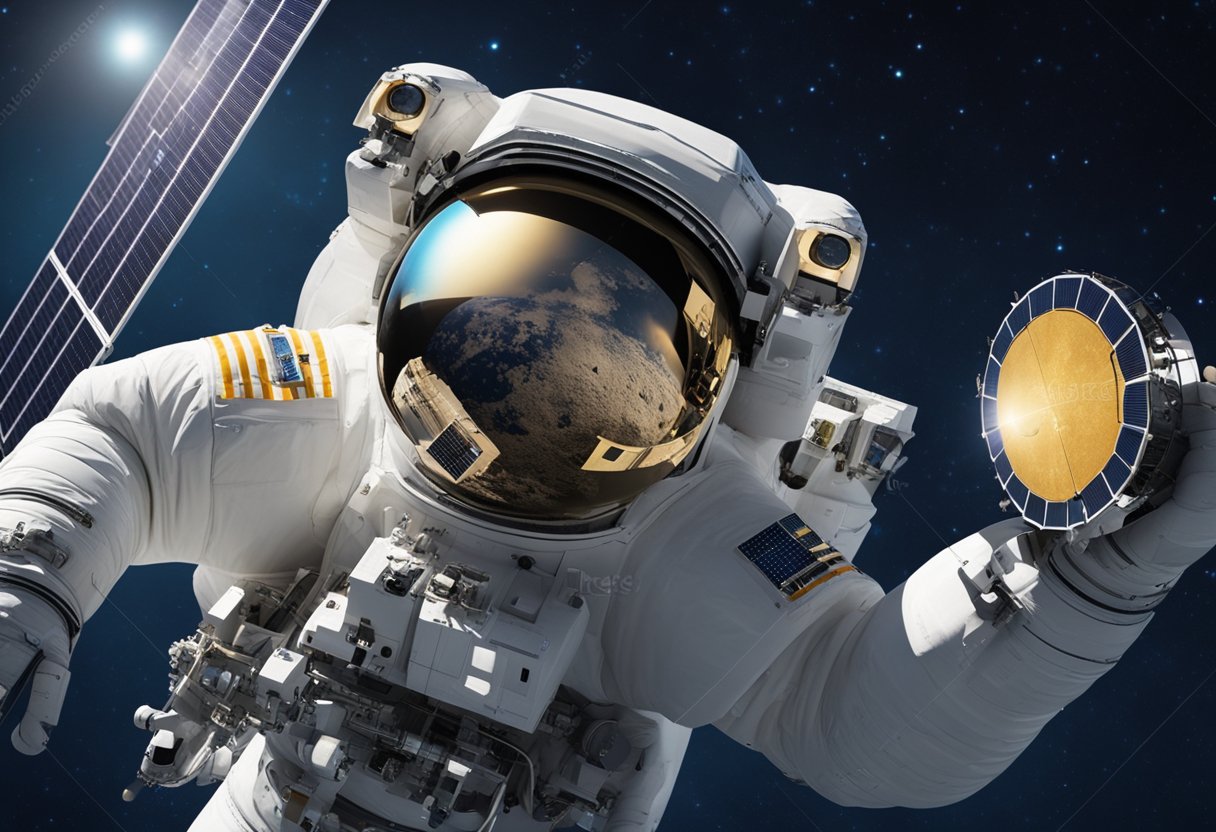
In our exploration of the moon, two significant developments have emerged: the detection of water-ice and the potential for in-situ resource exploitation. These discoveries are pivotal for the future of lunar exploration and utilisation.
Recent missions have significantly advanced our understanding of the moon’s composition, particularly at the South Pole. The Lunar Reconnaissance Orbiter has provided high-quality images indicating water-ice in shadowed craters. The presence of these resources could revolutionise how we plan future missions to the moon. For instance, VIPER will touch down in 2023 to examine the distribution of water-ice more closely, which may enable sustainable lunar exploration.
The concept of In-Situ Resource Utilization (ISRU) is critical for our long-term presence on the moon. By utilising lunar materials, we can minimise the need to transport resources from Earth. One promising endeavour involves extracting oxygen from the lunar regolith, a technique that could support both human life and the production of fuel. Ground-breaking experiments have laid the foundation for these technologies, with the aim of significantly reducing the cost and risk of human exploration.
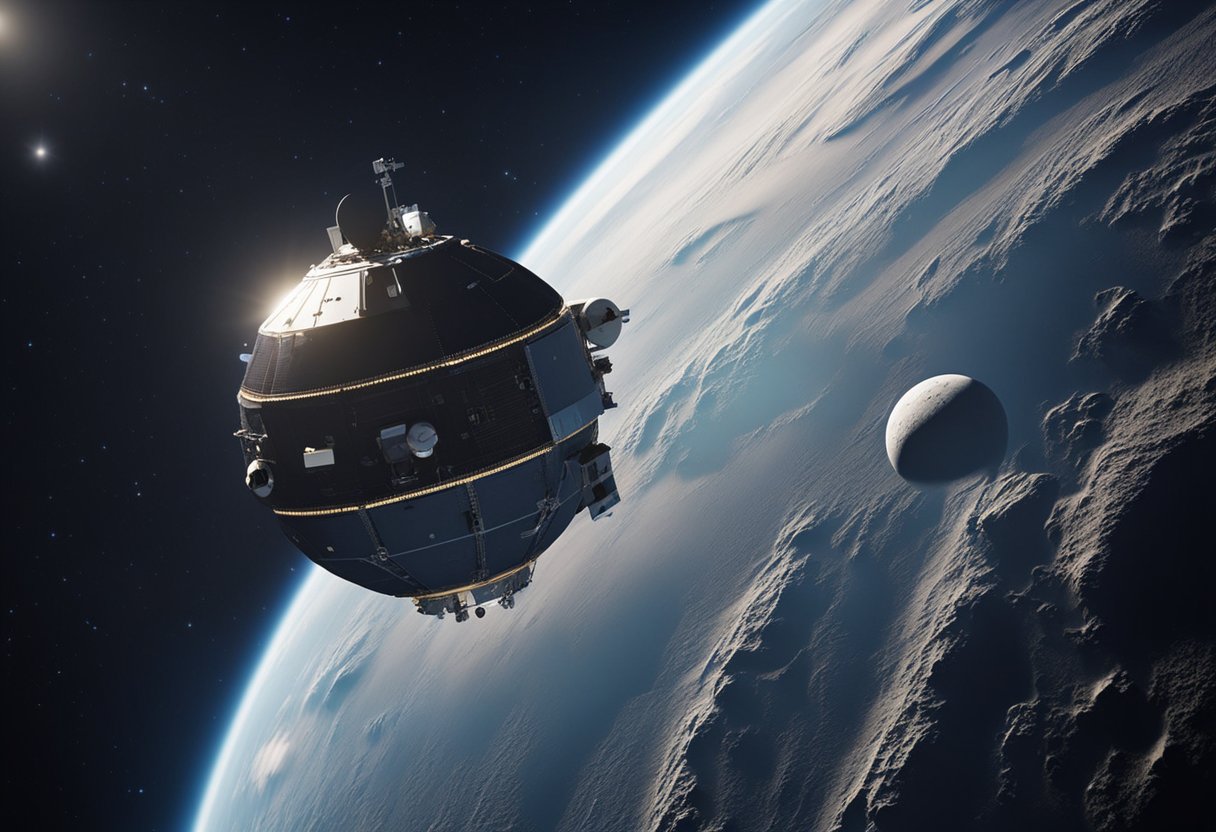
In our journey to the Moon, cislunar space serves as the pivotal stage for navigation and communication. With the vast expanse of space between the Earth and the Moon, understanding the intricacies of this region is vital for the continuity and success of lunar missions.
In the realm of cislunar space, Lagrange points represent positions where the gravitational forces of the Earth and Moon create pockets of stability that are advantageous for spacecraft placement. These points act as valuable locations for serving navigation needs and have the potential for building infrastructure that could support future missions.
For instance, the Queqiao satellite, a part of the Chinese Lunar Exploration Program, utilises the Earth-Moon L2 Lagrange Point. It enables constant communication between the Earth and the far side of the Moon, where direct signals are otherwise obstructed. Similarly, missions like Japan’s SELENE (Kaguya) made use of Lagrange points for orbital insertion, aiding in efficient navigation through cislunar space.
Effective communication systems are the backbone of space exploration, and cislunar space poses unique challenges due to the vast distances involved. The Goddard Space Flight Center, among others in the U.S., has developed technologies to maintain a consistent stream of data between Earth-based systems and lunar spacecraft.
One key development is the implementation of relay satellites positioned in cislunar orbit, which facilitate communication between Earth and assets on the Moon’s surface or in orbit that are outside of direct line-of-sight. This approach ensures that explorers and robotic missions can remain in contact with mission control, irrespective of their location in cislunar space.
Moreover, envisioning a future where space travel becomes commonplace, advancements in cislunar communication will also be central to the experiences offered by platforms like SpaceVoyageVentures.com, which anticipate the growing interest in space tourism and the necessity of robust support systems for such endeavours.
As we look ahead, the future of lunar exploration promises unprecedented missions and the ambition for long-term human presence on the Moon. The goals set forth are not only to scientific knowledge but also to establish infrastructure for permanent settlement.
We are currently witnessing a renaissance in Moon missions, with numerous space agencies prioritising lunar exploration. The Artemis program, led by NASA, aims to return astronauts to the Moon’s surface, including the polar regions, for the first time since the historic Apollo landings. These missions are crucial stepping stones that will help us establish a sustainable human presence on the Moon by the end of the decade. For instance, the Artemis program’s goals include landing the first woman and the next man on the Moon by 2025, leveraging innovative technologies for further exploration.
Our commitment to lunar habitation is strong, with plans to construct outposts that enable extended stays for astronauts. The proposed Gateway, a lunar space station, will serve as a multi-purpose hub for deep space exploration and support prolonged human operations on and around the Moon. The vision involves international collaborations for developing habitats and life support systems, scientific laboratories, and facilities for cargo and resource management.
In alignment with such efforts, commercial entities are also eyeing the Moon’s potential. A testament to this burgeoning interest is the presence of early-stage space tourism initiatives like SpaceVoyageVentures.com, which document the progression towards accessible lunar travel experiences.
Strategic commitments from both governmental and private sectors are signalling that the lunar frontier will soon be more than a place for short-term exploration; it will become a domain where humanity can live, work, and potentially thrive.
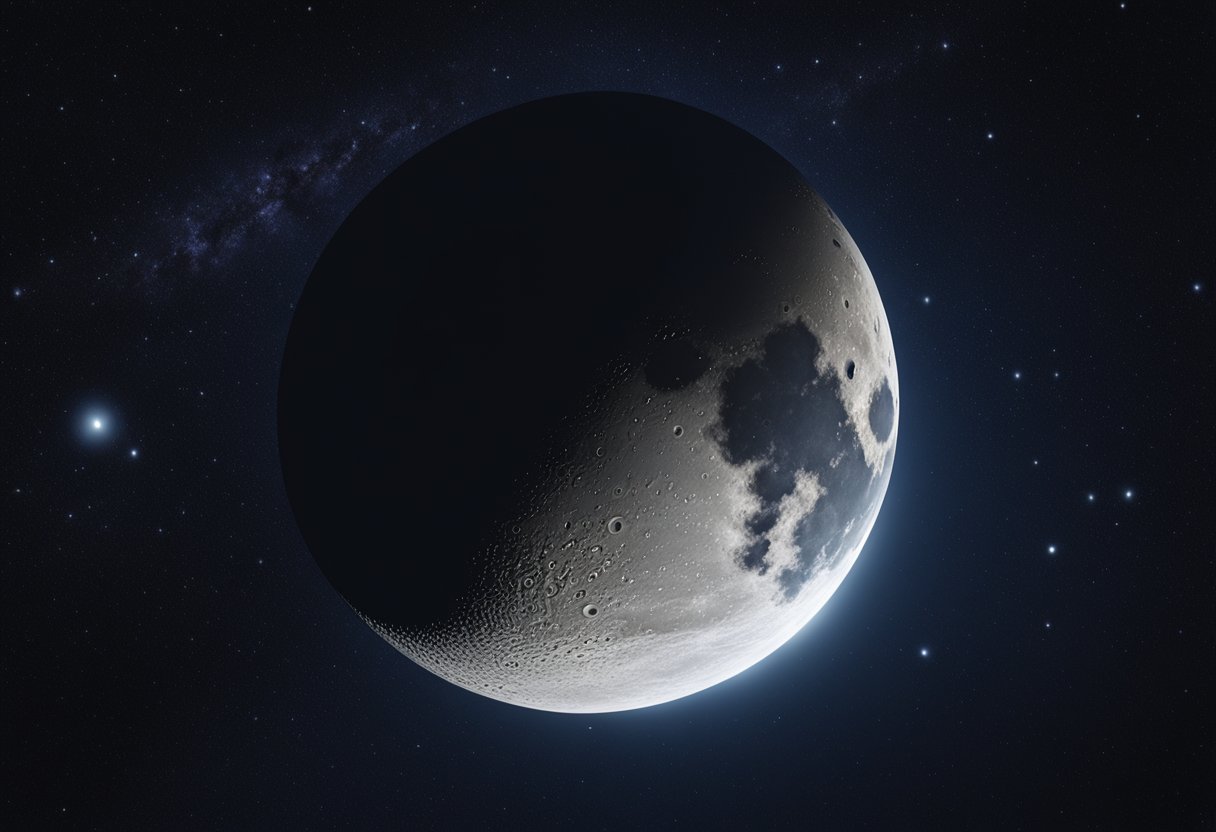
In this section, we cover some of the most pivotal questions regarding lunar exploration, from its significance to the technological strides we’ve taken since the days of Apollo.
Lunar exploration is crucial for advancing our knowledge of the solar system and developing the capabilities for future space endeavours, including the potential for space tourism as outlined on SpaceVoyageVentures.com.
From the launch of the first unmanned lunar probe in 1959 to the latest Artemis missions, the history of moon exploration is marked by milestones such as the Apollo moon landings and the deployment of lunar rovers by various space agencies.
Today’s lunar missions are more sophisticated, with a focus on long-term lunar presence, international cooperation, and utilising advanced technologies for lunar exploration.
Our expeditions to the Moon have shed light on lunar geology, the formation of our own planet, and the conditions required for the potential habitation of extraterrestrial environments.
Technological advancements since Apollo have been substantial, including developments in lander capabilities, remote sensing, and the introduction of reusable spacecraft by private companies.
Recent lunar missions have led to discoveries such as water ice in permanently shadowed craters and insights into the Moon’s complex geologic history, contributing to the planning of future manned missions and potential settlement.